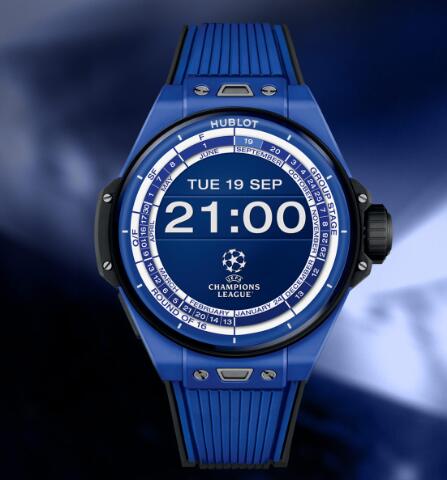AÖF - Açıköğretim - Ders Notları - Çıkmış Sorular
AÇIKÖĞRETİM ORTAK BULUNAN DERSLER DERS NOTLARI
Atatürk ilke ve inkilaplar Tarihi Ders Notları
Audemars Piguet Royal Oak Offshore Is Due For A Resurgence



- Kayıt Tarihi:
- 04.01.2024
- Cinsiyet :
- Bay
- Okulu :
- Anadolu Aöf
- Bölümü :
- Kamu Yönetimi
- Konum:
- Adana
Breitling Top Time Replica
breitling premier replica
replica watches for sale
luxury swiss replica watches
van cleef and arpels watches
chopard alpine eagle replica

Let’s start with the basics. When a trend is “trending” your average consumer is likely to subscribe to said trend (some may call this herd attitude; I say it is par for the course as humans are particularly adept at outfitting and enhancing themselves for social survival/status). When a tendency has run its course, the item in question becomes stale and is likely to cause a strong reaction of disapproval, a turning up of the nose - a public burn. Take skinny jeans for instance. It was the sunny climb to the top in the early-to-mid-aughts and a colossally dark fall to the bottom by the late 2010s. Don’t worry (or maybe do panic), skinny jeans will be back again.
Items that are “on trend” are, more often than not, a product from the zeitgeist. They reflect a recent discourse. Now, that but may be a regurgitation of a previous decade’s speech patterns done in a contemporary way (like flared denim jeans or camp-collar shirts) however my point is that styles are the opposite of classics: camel-colored cashmere coats or silk bias-cut dresses or even merino wool V-neck sweaters for example. Classics are mild-mannered, they are shy. Trends tend to be splashy; the theory is that, they change and mold and mutilate the existing fashion vernacular. And when you have a REALLY good trend, that pierces through the trend bubble and becomes a classic, like Art Deco jewelry or perhaps double denim.
The Audemars Piguet Suprême Oak Overseas was conceived in 1993, rose to popularity inside the early 2000s and then exploded in pertinence thanks to countless LEs and also celebrity aides, and then slowly and solemnly fell under the shadow in the Royal Cherry (which rose up from its own grave of irrelevance in the 2010s).
In order to be familiar with rise along with fall on the Audemars Piguet Royal Oak Offshore we must first understand its role in the wider cultural plot. All watches are fundamentally expressions of culture; they act, because clothing does, as a reflection of pop culture, technology, and style. The Just offshore landed as a bold turning point, initiating any radical transformation of the watch industry in addition to establishing the excitement for outsized watches.
The original Audemars Piguet Royal Maple Offshore, nicknamed the “Beast” (ref. 25721ST) was a hefty 42mm stainless-steel chronograph with exposed rubber gasket plus rubber on the crown and even pushers. A souped-up version of its Royal Pine predecessor. It was controversial. Gérald Genta’s vocal disapproval was echoed by classicists - and remains so today.
But the size wasn’t so radical when set in connection with the broader cultural landscape. In the ’90s the entire trend dialogue was obviously a theme of oversized, and this theme cut across cultures together with ages. The Offshore’s rubberized accents and quite a few comically extra-large case echoed the rise of extreme sports (the By Games, after all, were born just two years later). The actual 1990s gave rise in order to skate tradition and huge baggy jeans -- it was boom times with regard to youth lifestyle, and emblems were supersized : from grunge fans in huge egyptian cotton shirts to be able to punk disciples augmenting their ears along with giant plug earrings all the way through to backpackers and their larger-than-ever-before barbwire body art. The Ocean going, while very much in its own sector, and own space of high-end watchmaking, must have been a part of the much wider dialogue of individuals accepting the actual cultural push towards these more extreme measurements throughout all lines of personal expression.
Innovation is hard to stomach at first, it can feel like an affront to our carefully considered material identity. But change in fashion happens all the time. John Galliano’s FW 1999 Christian Dior couture show at the Orangery within Versailles shocked every disposition customer from the audience with its explicit sexual nature as well as deconstruction with the traditional montage concept. As time elapsed it became some sort of milestone show in fashion history and is continually referenced like a turning point for your fashion zeitgeist. The same goes for of Martin Margiela and his Tabis rapid an “invisible” shoe as their form separates the big toe from the rest of the foot. Shocking at first, Tabis are now commercially indestructible. Big ideas and also radical design are what push the particular conversation forward.
The Audemars Piguet Polish Oak Out sourced was born as being a youthful counterpart to the more classic-looking predecessor instructions let’s not forget that the Souverain Oak had been radical regarding 1972. It faced a myriad of criticisms during its unveiling. Now look at her riding high! She too has come and gone and then swung back around again. Because trends are usually cyclical! Back to Offshore, which was purposefully designed as a reinterpretation of the Royal Oak, not a reissue. Audemars Piguet therefore had the ability to use the Off-shore as a springboard without “stepping on history. ” This in turn meant AP had a good artistic license to use the watch as a platform for Ces and as a new canvas intended for material innovation.
Konuyu Okuyanlar:
1 Ziyaretçi

